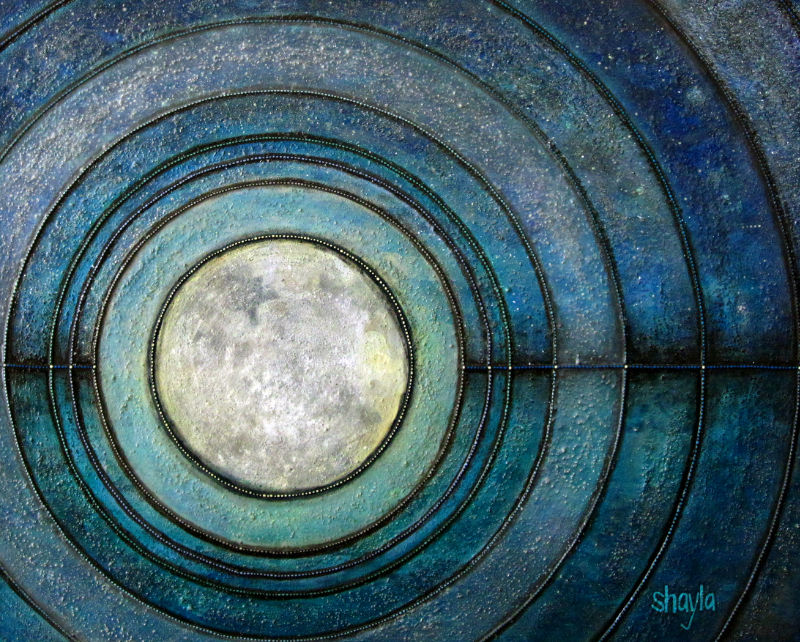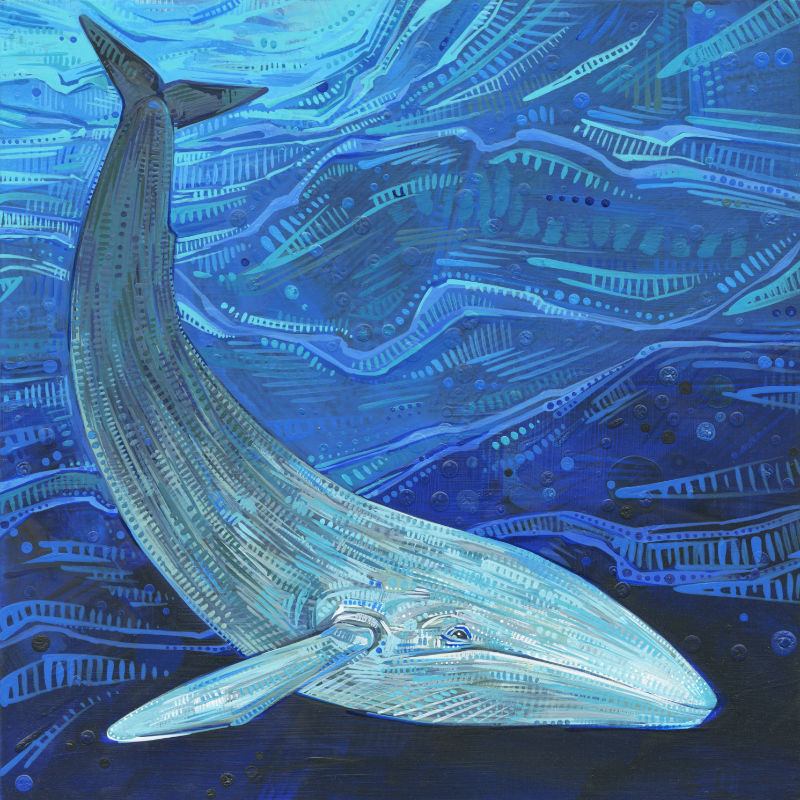Blog / 2017 / How Regular Microdonations to Artists Can Save the World
November 16, 2017
At the beginning of my career, at an art opening, I was talking to a critic about an artist we both knew when the critic confided in me, “you know, I made that guy.”
It was one of those moments you hear about but never imagine you’ll actually experience. Before the critic’s jealousy and bitterness could infect me, I backed away and quickly came to two conclusions. First, the critic might very well have a claim on that artist’s success. Second, I didn’t want anyone to ever be able to say that about me.
Over a decade later, I’m pleased to report that I’m officially successful and that no single individual can claim my success. But I’m also delighted for just about anyone to say they made me. Because I owe my audience everything.
Most artists who make at least part of their living from their art will understand this sentiment. Earning money in any regular fashion as an artist isn’t easy, and the only way a creative manages to make it happen is with the support of the people who appreciate them and pay them for what they do.
This was true in Italy with the Medici and Michelangelo as well as many other artists, but it continued to be true long after it was popular. By the time Frida Kahlo’s friends were sending her monthly checks to keep her household afloat, patronage wasn’t done ostentatiously, but it was still a vital part of the art economy. In the last few years, it has gotten a whole lot easier to support artists with sites like Patreon, which automate the gift and create an environment in which small donations can make a big difference.
It works like this: an artist sets up a Patreon page, choosing to receive money either every time they publish a new artwork or once a month. The artist promises thank-you gifts for the pledges and invites patrons to follow their career closely through the Patreon platform. They ask supporters to give any amount, large or small. Patreon charges the patrons, then sends the money to the artist. And voilà! When multiple donations are pooled together like this, the artist has a semi-dependable source of income as well as the peace of mind that comes with a steady paycheck.
All kinds of visual artists have created Patreon pages. Illustrators like Sophie Labelle, vloggers like Kat Blaque, and sculptors like Chelsea Mae have all found a home on the platform. There are also plenty of painters, including me and Shayla Maddox, who was kind enough to share her experiences and expertise with me.
Knowing if Patreon is right for you
While any artist can benefit from Patreon, those who already have a handle on digitizing their output are set up to succeed more easily. Painters, sculptors, and the like have to photograph their artwork, which can be a hurdle for some. Additionally, according to Shayla, “it’s crucial to find innovative ways to translate your particular medium to a computer screen, because it’s the window by which your fans are peeking into your studio.”

Patreon isn’t just a mechanism for receiving regular financial support: it’s a social media platform. This means that artists need to communicate through the platform on a consistent basis. “Patreon is an ongoing part of your career,” Shayla says, “and it’s your job to nurture and evolve it into something that grows bigger and bigger. It’s a place for you to express all sides of your process, and document not just the making of your art, but the making of your art career. You are documenting your own life.”
Shayla’s decision to join Patreon flowed naturally from her art practice. She grew up dabbling in various mediums, with an artist mother who encouraged her to be creative. In her 20s, Shayla joined an art collective and started creating elaborate installations that drew thousands of visitors. When the group disbanded, she began painting more and finally started to see herself as an artist.
After showing her work through more conventional means, Shayla decided to begin organizing her own art events. She would create a cohesive body of work, rent space, and pay for advertising, alcohol, and everything else. At the same time, she maintained a regular and creative web presence, using various social media platforms as extensions of her artistic process. Her own shows were even more successful than those she’d had at galleries, and she got to keep 100 percent of the profits when she sold her work.
From this vantage point, setting up a Patreon page made perfect sense. Shayla was already committed to cultivating her audience and making her way on her own terms, no matter how much work it required. This kind of attitude is useful for any artist, but especially if you’re going to get on Patreon.
Inviting your audience to meet you there
For me, the decision to ask for ongoing support from my fans was more fraught. The very idea of it made me feel vulnerable. What ate at me was the possibility of public rejection. What if I asked for financial help and nobody gave it and everybody could see that nobody was giving it? When your pledge total is public, as it can be on Patreon, it’s difficult to pretend that your relationship with your fans is better than it actually is.
“Patreon is not going to turn you into a star overnight,” Shayla says. “Building your audience is the first and most important thing, and Patreon is ultimately a reflection of that.” Shayla adds that it’s fine to do both simultaneously, but that you shouldn’t be hard on yourself if you don’t have many patrons. Just keep connecting with your audience wherever they are, while also refining your pitch about why everyone should support artists on Patreon.
This last part is vital. Many people still don’t know about Patreon, Tipeee, Flattr, and other sites that allow lovers of creativity to support artists with microdonations on an ongoing basis. Artists who want to partake in the plenty of Patreon must be willing to promote the platform along with their art, and many aren’t comfortable taking on this responsibility. A lot of creatives worry that asking for help and encouraging the microdonation model will turn them into a charity case. While it’s understandable that professionals would want to avoid this association, it’s ultimately a false choice.
Artists have only ever been able to create because their communities supported them. From the very beginning of art, in a world where humans were hunting and gathering with stone tools, artists wouldn’t have been able to make anything unless their social group was backing their efforts.
Things have obviously changed in the last ten thousand years, but the essential facts are the same. Art is a necessity for life, just like it was for our ancestors, and artists still need to be supported. The problem is that, today, art is so much a part of our lives that we no longer recognize it. We have trouble truly valuing it.
Deepening society’s understanding of art
When people say “art is a luxury,” what they actually mean is that art made by independent artists feels pricey. Of course, indie art only seems expensive in comparison to the stuff produced by art factories.
Hollywood, the design industry, and large publishing houses give most people their daily art fix. Television, like all art, is storytelling and expression. It provides the audience with a feeling of connection, and viewers become obsessed with their shows without understanding that the boob tube is giving them the art they need.
Similarly, some people bring art into their lives through style, through what they wear or how they decorate their home, and some do it through books. People have different ways of getting the art they need, but they all do it every day and they all spend a lot of money to do it, because art isn’t something we can live without.

Big Mama (Blue Whale)
2012
acrylic on panel
10 x 10 inches
It’s hard for independent artists to compete in this environment. Art factories crank out their art more cheaply than the indies because the big box money-making machine is diverse. Hollywood and its fellow factories don’t just sell art products. They auction off their audience’s attention to advertisers, and they partner with each other to cross-promote and make sure that people remain loyal consumers of big brands.
In the end, people may be paying less cash out-of-pocket for factory-made art, but the true cost is enormous. It’s why we’ve come to the place many independent artists are at, struggling to make ends meet.
Happily, a shift is taking place. With the help of platforms like Patreon, artists are making more money and people are starting to support them at a price point that feels more do-able, even if that’s one dollar per month. Bit by bit, the microdonation model is unraveling the false ideology of “art = luxury.”
Making art better
A semi-dependable income for independent artists changes things for society as a whole, but it also impacts the artist who accepts it. Shayla describes the feeling as a kind of accountability.
“Patreon has caused me to be so much more aware of my daily studio time and the things around me I utilize in my work,” Shayla says. “I always want to communicate better, and include patrons in aspects of my life that are important to my art. It’s helped me define who I am and what I’m saying through my work. When I see something interesting happen in my studio—the sunlight glimmering off a wet painting—it excites me and I immediately want to share it with my patrons—my friends!”
The regular gifts from donors amount to a whole lot more than just money in the bank. The relationship between longtime patrons and the artists they support makes the art more meaningful, both for its audience and its creator. Some artists will find this intimacy with their audience uncomfortable, but, for those who can allow their fans to actively and easily contribute to their art-making, the reward is more important even than the semi-dependable income that so many of artists crave.
The real prize is an unwavering certainty that art matters. This knowledge can be wonderful, but it’s also terrifying. Making art with this awareness is vulnerable, open, and raw. In other words, it’s powerful.
PLEASE NOTE
This article was originally published in Professional Artist magazine, which I don’t write for anymore.
Maybe this post made you think of something you want to share with me? Or perhaps you have a question about my art? I’d love to hear from you!
To receive an email every time I publish a new article or video, sign up for my special mailing list.
If you enjoyed this post, Ko-fi allows you to donate. Every dollar you give is worth a bajillion to me!



